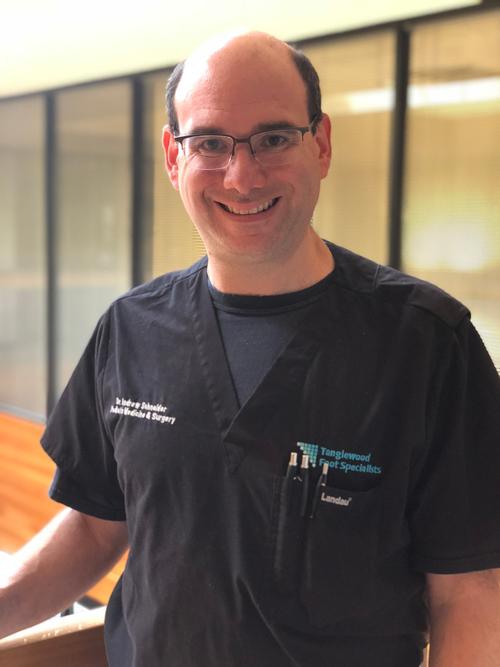
Once formed, a bone spur isn't likely to go away on its own. But that doesn't mean you have to live with the pain. Because, you don't have to get bone spur surgery to get pain relief from your podiatrist. Let's take a closer look at how this all works.
What is a bone spur?
A bone spur is a bony bump that forms on other bone. Often, you'll notice spurs on your joints, or in areas where you find natural bone ridges. But mostly, the bone spurs usually form in areas of tension, pressure, or trauma. That means they can show up in lots of spots on your foot. Still, most commonly, you see bone spurs on your heel, the top of your foot, or your toes. In some cases, bones spurs form because of osteoarthritis.
On their own, bone spurs aren't a medical concern. In fact, they often cause no symptoms. But, since they change the profile of your foot, they can make it harder to wear shoes. Or create painful inflammation at and around the bone spur site. That's why, for some people, bone spurs become painful. Which is when you may come see your podiatrist for help with bone spurs.
Non-surgical Bone Spur Treatments
If bone spurs are painful, you have lots of treatment options. But remember, non-surgical treatments will address your pain. They won't get rid of your bony bump.
When I see patients with painful bone spurs, I start with conservative treatments. Non-steroidal anti-inflammatories (NSAIDs) such as Advil can help with pain. We can also look at changing your shoes, to prevent painful rubbing on your bone spur. If that's not enough, padding your shoes or bone spur may help. And remember, bone spurs form with pressure. So we can take away some of that pressure with custom orthotics. An option that may also prevent your spurs from growing.
Still, even if these options stop the pain from your bone spur, that doesn't mean that the bone spur has gone away. If you look at your foot, you'll probably still see that bump. So, why are you feeling better?
Most likely, our non-surgical treatments relieved the spur's pressure and tension. And that relief helped control the inflammation surrounding your spur. (Which was the cause of your pain in the first place!)
Of course, your body could resorb your spur on its own. But it probably won't. Because, without surgery, we can only control the pressure and tension hitting your bone spur. But we can't stop it completely. That's why, if you want a cure for bone spurs, you'll have to look at more invasive options. Because the only way for a spur to be completely removed is with surgery.
Surgery for Bone Spurs ![If you choose bone spur surgery, we'll have to wrap your foot with a surgical dressing]()
Most people won't need surgery for bone spurs. In fact, 90% of patients feel better without an operation. But, if your pain persists for a year, or if your bones purs are tied to plantar fasciitis, you may choose surgery.
So, what does bone spur surgery involve? Before operating, I would take X-rays or other scans to see the extent of your extra bone growth. If you are a candidate for surgery, we would next come up with a plan.
The goal of the operation would be to remove your extra bone. But it might also release tension on your plantar fascia. Especially if your bone spurs were linked to heel pain.
Now, the most important part of your treatment would come after surgery. Because, even if we remove your bone spur, it could come back unless we also treat the underlying problem.
How we do that depends on what caused your bone spurs. If the issue is arthritis, there's not much we can do. But if pressure, or faulty mechanics, are the problem, we'll tackle both of those issues right after surgery. Because, if we don't, those bone spurs will be back before you know it!
One of the best ways to stop pressure on your feet is to fit you for custom orthotics. Designed to meet your body's needs, these medical devices add support to your feet. That way, they take pressure off overworked areas. Meaning your body won't have to compensate. And hopefully won't develop new bone spurs as a protective response.
Of course, every patient is different. So each person needs a different bone spur treatment plan. Which is why every plan we lay out is tailored to your individual needs and lifestyle.
Are you worried that you may be dealing with a bone spur on your foot? Don't wait until you feel pain! Instead, get it checked out right away by Dr. Andrew Schneider at Tanglewood Foot Specialists. If you come in before it starts hurting, we'll have more treatment options to choose from! So we'll be able to work with you to determine the best course of action to take.


